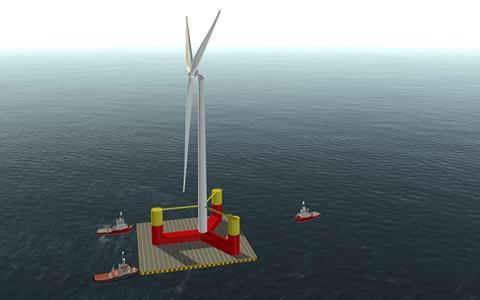UK-based Tugdock is taking part in a simulation project at the port of Milford Haven’s Pembroke Port facility in Wales that will support the development of floating offshore wind turbine assembly.

Working with the port of Milford Haven and Offshore Renewable Energy (ORE) Catapult, the project will simulate the processes of manoeuvring large floating wind turbines into and out of Pembroke Port. These simulations will give a detailed understanding of the sequence of events that need to take place to successfully complete these phases of turbine recovery and deployment.
In a later stage of the project, additional simulations will be performed to assess how Tugdock’s floating dry dock technology could be used to increase capability in these processes.
Lucas Lowe-Houghton, director of business development for Tugdock, said: “Tugdock’s technology has been designed to help ports play a bigger role in floating offshore wind turbine assembly. It allows floating dry docks to be delivered by road in modular form and assembled at the port to dimensions far wider than most of the world’s existing dry docks. This technology can greatly increase the capacity of docks such as Pembroke Port. The floating platform is then towed to deeper water for launching of the turbines.”
Work is already underway at Pembroke Port to establish a world-class base for marine energy and engineering. The infrastructure at Pembroke Port is being adapted to accommodate the growing number of renewables developers who are seeking to base themselves there due to its proximity to the Celtic Sea.
Simon Cheeseman of ORE Catapult explained: “The Celtic Sea has some of the best wind resources in Europe, so the fast-growing floating offshore wind industry is a huge opportunity for the region. With floating wind farms, instead of attaching the turbine to a fixed foundation, the turbine is supported by a structure that floats on the surface of the sea. The floating platform is then tethered to the seabed. This technology means that turbines can be located over the horizon in very deep waters, with access to the most consistent and powerful winds. In 2023, the Crown Estate, the controlling authority for the seabed, is issuing leasing rounds for up to 4 GW of electrical energy from floating offshore wind to be deployed by 2035 with a follow on 20 GW anticipated by 2045.”
















